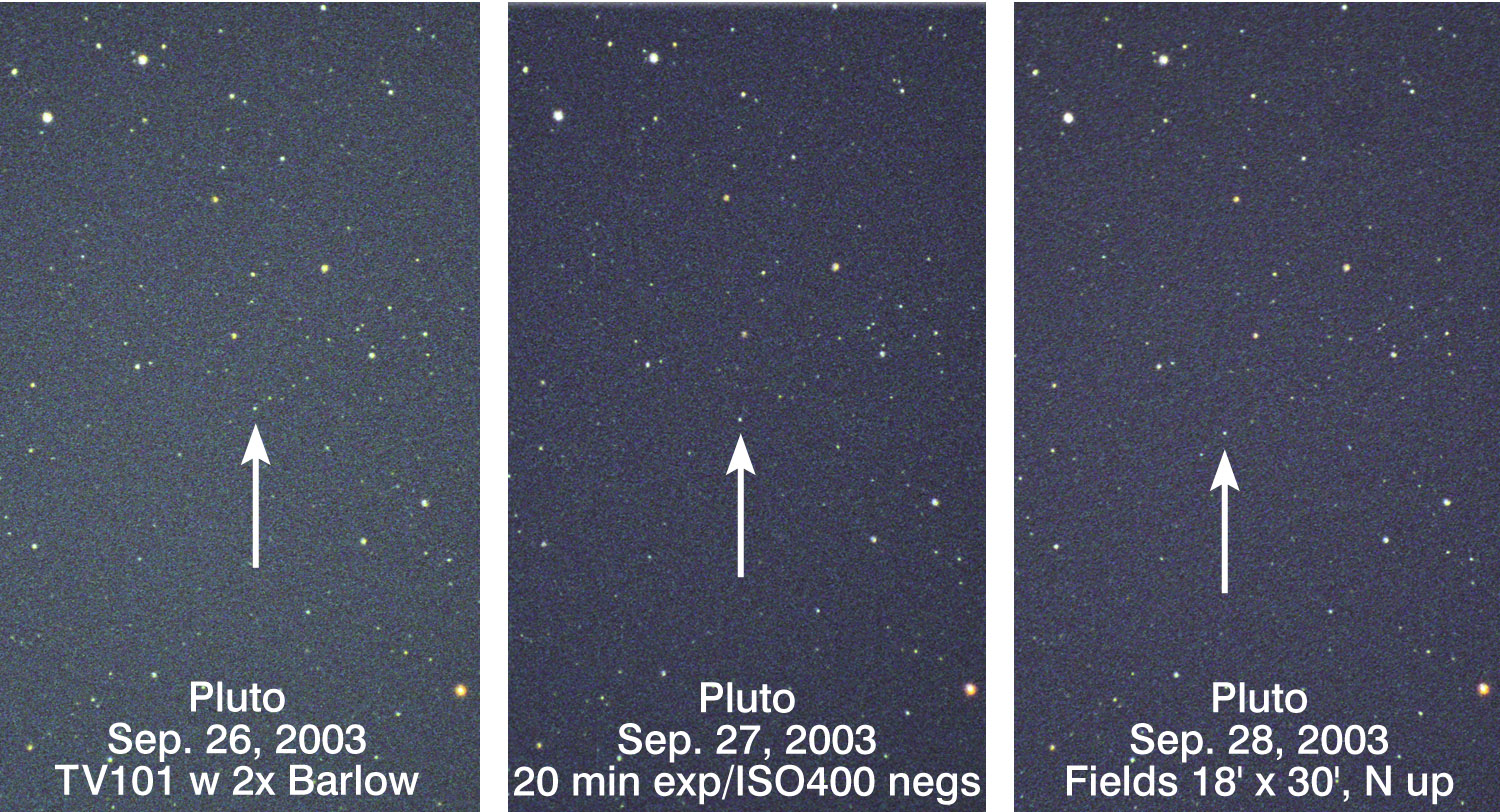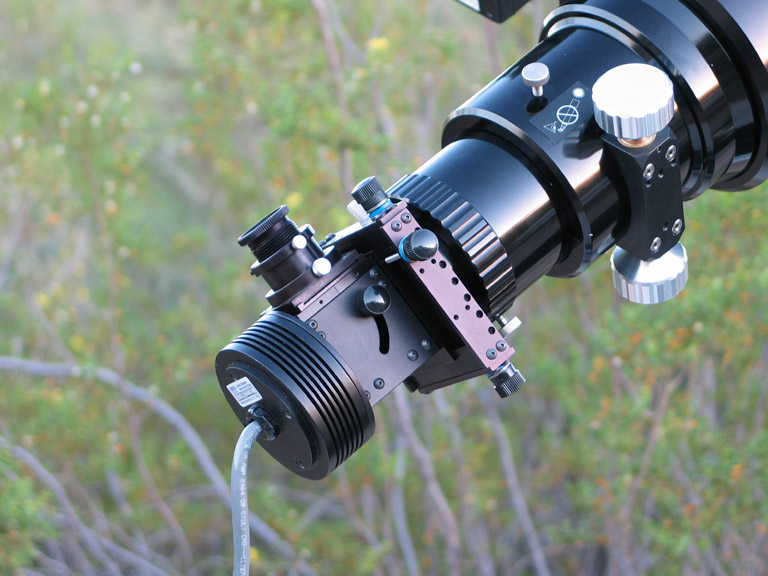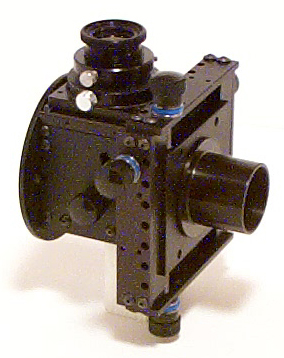 |
|
|
|
Clyde
Tombaugh discovered Pluto in early 1930 after taking two exposures
of the same section of the sky 6 days apart. It was not by accident
that he found the 9th planet for his job was to systematically
image the area of the sky around the ecliptic in the hopes of
finding the long sought and elusive Planet X. When he was not
photographing, he was comparing pairs of plates to find a star
that moved between them. Clyde took 60 minutes exposures using
a 13-inch (3 lens element) f/5.3 refractor called an astrograph
(an astrograph is a telescope that has a wide field of view).
The Lowell Observatory does not have any information about the
film speed of the original 14x17 inch glass plates used, but after
seeing copies of the original discovery plates, I estimate that
the film speed was no higher than 50, probably 25 or lower.
In
honor of Clyde¹s discovery, I imaged Pluto on emulsion, using
ISO400 negative film, with a 4-inch refractor
(TV NP101) working at f/10.8. My Astro-Physics 155 F7 Starfire
EDF served as the guidescope with an attached
ST-4 autoguider. The biggest advantage I had over Clyde was knowing
exactly where Pluto is located and I obtained this information
from the Astronomical Calendar 2003 by Guy Ottewell. Pluto was
around magnitude 13.8 at the time I
took these pictures. The 13-inch astrograph had 10 times more
light gathering capability than my 4-inch refractor but today¹s
modern films far surpass those of 1930 so I was able to easily
image our smallest planet in
20 minutes.
|
|
|
|
The
above images of Pluto were autoguided with a ST-4, with the FMF+XYF
Combo. This is a special autoguiding accessory for the ST4. The
FMF+XYF Combo is a totally intergrated unit that has a Flip-Mirror-Focuser
with The XY Finder bolted into the Flip-Mirror-Focuser.
|
|
|
|
 |
The
picture on the left shows the ST4 attached to the FMF+XYF
Combo. And the ST4 FMF+XYF Combo is attached to a telescope.
The FMF with the 3 axis adjustable reticle easily focuses
for the ST4 and the XY Finder makes finding and centering
guidestars a breeze. It's fast, easy and very intuitive
to use. No awkward 3 point positioning with guidescope rings.
No worry about damaging the guidescope tubing, no flexture
concerns either. The guidescope can remain securred and
parallel with the main telescope.
|
|
|
|
|
|
For
a complete description of the Flip-Mirror-Focuser for the
ST4 please click HERE
For
a complete description of the XY Finder please click HERE
|
|
|
|
|
 |
|
The
ST4 FMF+XYF Combo is cnc milled from Aluminium, deburred
and black anodized, to give it a matte like finish. Light
weight, and compact it only takes up about 2.5" of
back focus, which is suitable for short focul length refractors.
Price
is only $449.00
Please contact Tau Ceti Co. for availability and deliver
schedules.
|
|
Please click here
to view a cad rendering of the ST4 FMF-XYF Combo.
This will have some basic dimensions.
|
|
|
|
|
|
|
|
|
|
|
|
|
The
image to the right shows the FMF+XYF Combo being used on
the main telescope, an AP 155. The ease of using the FMF+XYF
Combo means that one can use it on any scope, go from one
scope to another. This offers the user much more flexability
for the types of images one wishes to take. Whatever the
form of imaging one wishes to take, the unused scope will
serve as the guidescope. And which ever scope is used for
image acquisition, the FMF+XYF Combo offers one more important
advantage, image composition. Centering and framing the
object to be imaged is important. Finding a guidestar thru
the guidescope shouldn't hinder that effort. The FMF+XYF
Combo will allow finding guidestars, that will facilitate
a satisfactory image composition.
|
|
|
|
|
|
|
|
|
All
images on these pages are copyrighted by Tau Ceti Co.
Photos of the FMF+XYF Combo attached to telescope [AP155] are
courtesy Ken Graun, [Copy Right Ken Graun]
Image of Pluto is courtesy Ken Graun, [Copy Right Ken Graun]
|
|
|
|